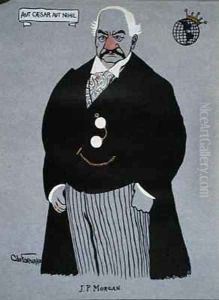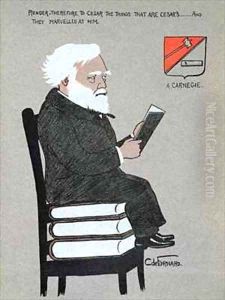Carlo de Fornaro Paintings
Carlo de Fornaro, born in 1871 in Milan, Italy, was a multifaceted artist known for his work as a caricaturist, illustrator, and writer. He spent his formative years in Europe, where he developed his artistic skills. Fornaro's work was influenced by the vibrant cultural and political environment of Europe in the late 19th and early 20th centuries. His interests were diverse, and he actively engaged with the artistic movements of the time.
After moving to the United States, Fornaro became known for his political caricatures. He published a magazine titled 'Vanity Fair' (not to be confused with the later and more famous publication of the same name), which featured his satirical takes on society and politics. His bold style and incisive wit earned him recognition among the intellectual circles of the day. However, it was his caricatures of the Mexican dictator, Porfirio Díaz, which brought him significant attention—and not all of it was positive.
In 1908, Fornaro published 'Diaz, Czar of Mexico', a scathing critique of Díaz's rule, filled with biting caricatures. The book led to Fornaro's arrest for libel, and he was sentenced to a year in the Blackwell's Island Penitentiary, although he served only a short time before being released. This experience only seemed to fuel his fire, as he continued to produce art and write with a critical eye on society's powerful figures.
Fornaro's artistic output was not limited to caricature. He was also a painter, and his works were exhibited in various galleries. His style was characterized by a strong use of line and a clear influence from his caricature work, with an emphasis on expressive features and social commentary. Despite his achievements, Fornaro never attained the same level of fame as some of his contemporaries.
Carlo de Fornaro's life was one of bold expressions and artistic endeavors that often challenged the status quo. He died in 1949, leaving behind a legacy of art that continues to be appreciated for its historical and artistic significance. His works offer insight into the political and social climate of his times and showcase the power of art as a medium for social critique and commentary.

